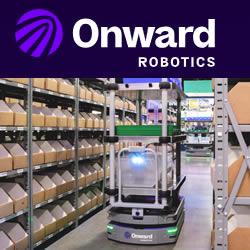What Robots and AI Learned in 2015
Watch these robotic 'reindeer' from Boston Dynamics pull Santa's sleigh
Google to incubate its robotics and drone divisions under Google X
Four Market Forces That Will Shape Robotics Over The Next Year
'Rushing into robotics revolution without considering impact,' warn scientists
'Darwin' the thinking robot teaches itself how to walk, just like a child
IREX - Meet the Japanese robots that do what humans can't
On Cyber Monday, Friendly Robots Are Helping Smaller Stores Chase Amazon
Amazon's robotics group asked the FCC to test special wireless equipment
Simbe Robotics launches new retail robot
Toyota Invests $1 Billion in AI and Robots, Will Open R&D Lab in Silicon Valley
Skype founders invent self-driving robot that can deliver groceries for �£1
UCSD to create robots that see, think and do
Six-axis robotic arm called Eva, which weighs 2.3 kilograms and will cost $3,000
Rob Scharff's Soft Robotics 3D-printed hand responds to human grip
Records 706 to 720 of 773
First | Previous | Next | Last
Mobile Robots - Featured Product

